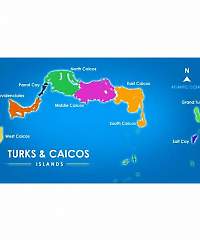A growing number of medical tourists are flying into Australia to take advantage of hi-tech healthcare.
Over the last decade Australians have been heading overseas in droves, to places like Thailand, India, South Korea and Malaysia for medical treatment.
It’s often cheaper, and patients can combine a holiday with plastic surgery or dental work.
But as Australians fly out, a growing number of medical tourists are flying in — from New Zealand, the United States and increasingly from Asia.
Professor John Catford is medical director at Epworth, the largest private hospital group in Australia’s southern state of Victoria.
He says there’s “a burgeoning middle class” in Southeast Asia.
“Tens of millions of people actually for the first time having resources they can use to improve their well-being,” he told Australia Network’s Newsline.
Epworth looks after about 600 international patients every year from over 30 different countries including the Pacific Rim, Singapore and Indonesia.
It is Australia’s high quality, hi-tech healthcare which is most in demand — including robotic surgery, in vitro fertilisation (IVF) treatments and cancer care.
It is difficult to assess just how many patients actually travel to Melbourne specifically for treatment, but Professor Catford believes the numbers are growing and the economic potential could be enormous.
“If you think of international education, how important that is to the Australian economy, in Victoria it’s the number one export, in Australia it’s the third leading export. I think international healthcare could rival that in a decade or two.”
In 2011 Australia’s Department of Resources, Energy and Tourism commissioned Deloitte Access Economics to conduct a study on Australia’s viability as a destination for medical tourism.
Lynne Pezzullo, a director and lead partner of health economics and social policy at Deloitte Access Economics, was the lead author.
“We’ve got over 10,000 people coming to Australia for medical tourism. There are though 5.5 million tourists a year in Australia so that only represents 0.23 per cent of our total tourist base. So clearly there would be a lot of work to do to expand that in to a really sizeable market,” Ms Pezzullo said.
State government push
The Victorian State Government, in particular, is keen to market Melbourne as a healthcare destination.
“We see inbound tourism of that type as just one part of a broader health export strategy that the state is developing and that would include conferences and would include inbound research support and inbound investment,” Victorian Health Minister David Davis said.
Professor John Catford says red tape could obstruct those seeking to take advantage of Australia’s high quality healthcare.
“We need a supportive government framework that actually encourages it and actually sorts out particular barriers or obstacles. A typical one would be visas so people can come in easily, with their families support, to receive medical care,” he said.
Capacity and superbug concerns
However Steve Hambleton, the President of the Australian Medical Association (AMA), says it would be a mistake to grow the industry too quickly.
“It is entirely appropriate that a first world country should be thinking about exporting expertise just like this but we have a problem here about training the next generation of doctors for our own domestic needs and when we have surplus capacity is when we should be looking overseas,” he said.
While the growth of medical tourism in Australia would bring with it obvious financial benefits, for public hospitals the challenge will be ensuring that with that influx of wealthy international private patients there’d be no reduction in the level of service and quality of care available for local public patients.
That’s not something the Victorian Health Minister is worried about.
“I think what will be seen is greater public capacity because if you’ve got additional revenue flows coming into our health system in Victoria that can help fund additional capacity and also fund the additional research streams that are very important,” David Davis said.
The AMA says there’s also a risk that medical tourists could bring with them drug resistant “superbugs” prevalent in many Asian countries.
“The reality is that if you live there there’s a good chance you will be carrying those multi-resistant organisms and when you go internationally you will take them with you,” Steve Hambleton said.
“Now the problem occurs when you have surgery, major surgery, maybe a hip replacement or knee replacement and therefore you’re quite sick or quite stressed by that physically, that organism that you could be carrying with you could become invasive and if it does we won’t be able to treat it either and of course there’s a chance that organism will be left behind and we’ll actually see those multi-resistant organisms take up residence here too.”
Medical tourism is already big business for many other countries and Australia will have to work hard to catch up to exploit the lucrative healthcare market and those willing to pay top dollar for it.
source: http://www.radioaustralia.net.au / Radio Australia / Home> News / by Kesha West / February 07th, 2014




